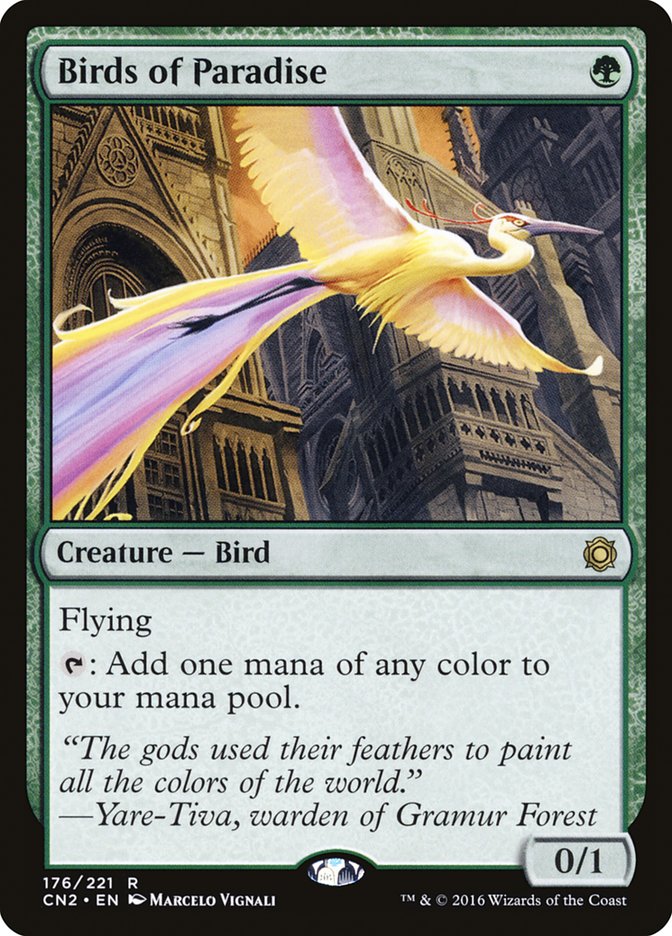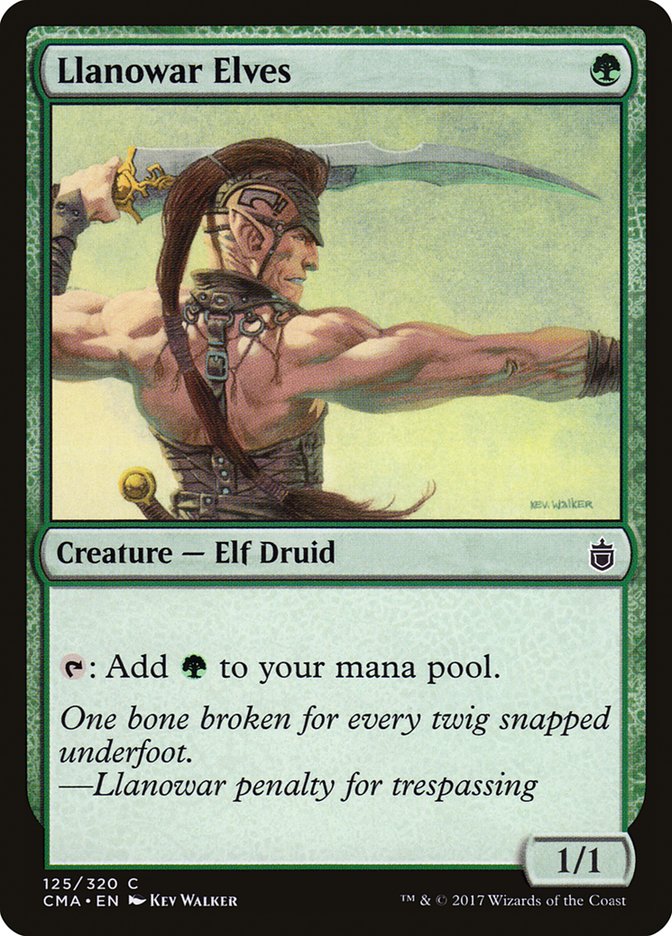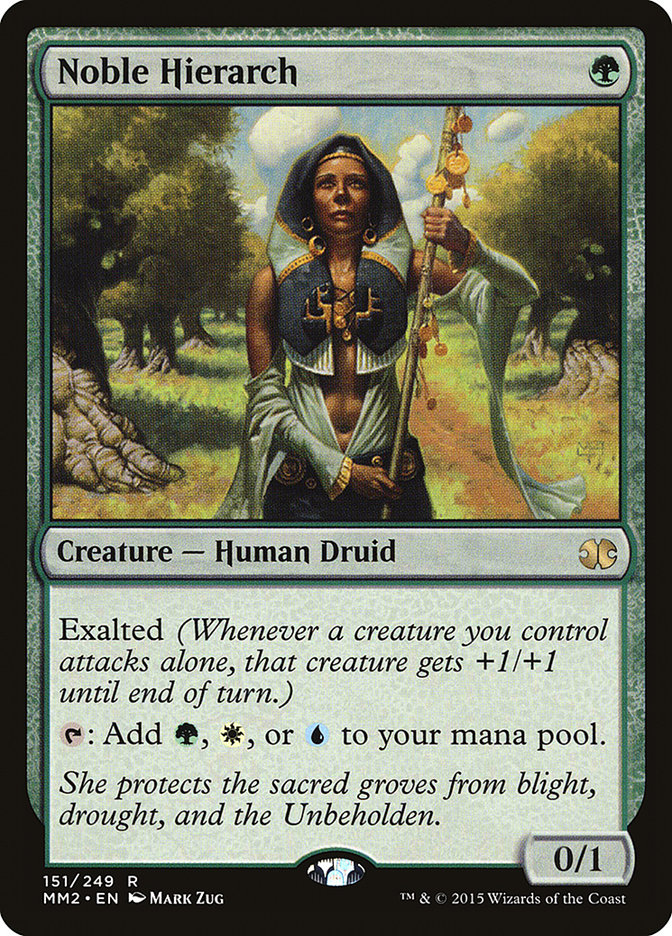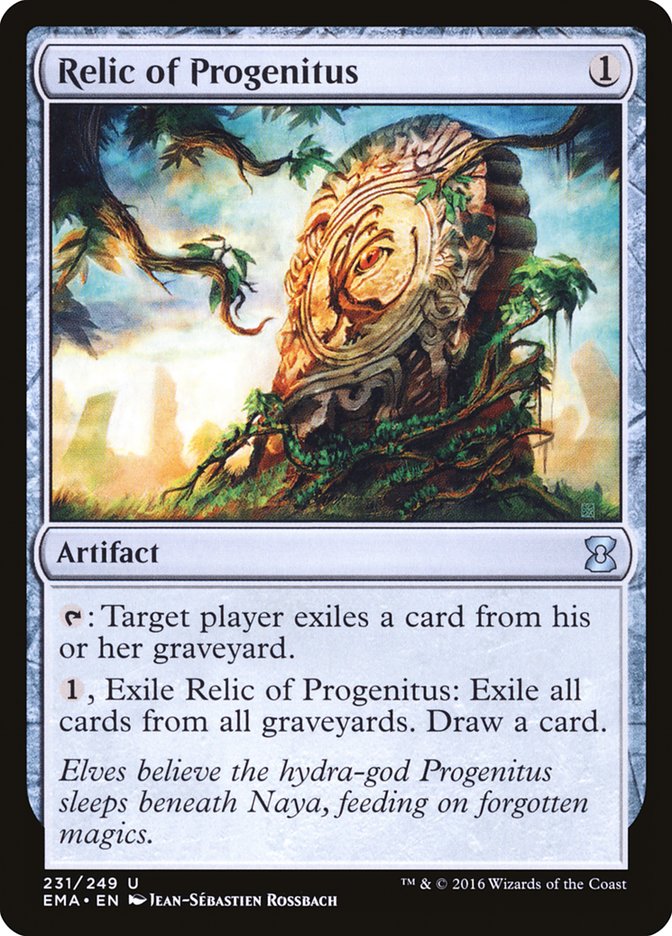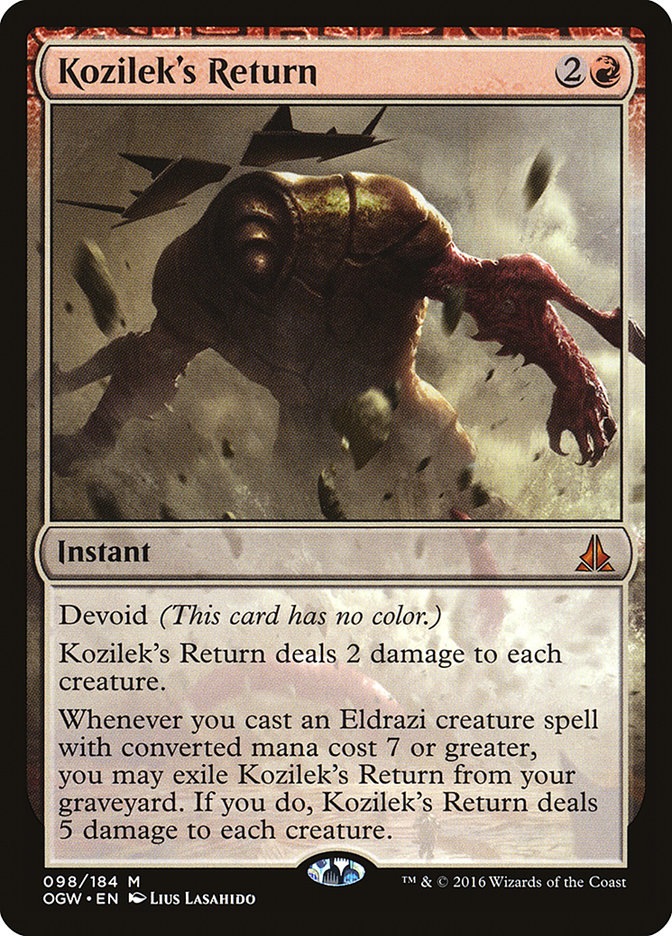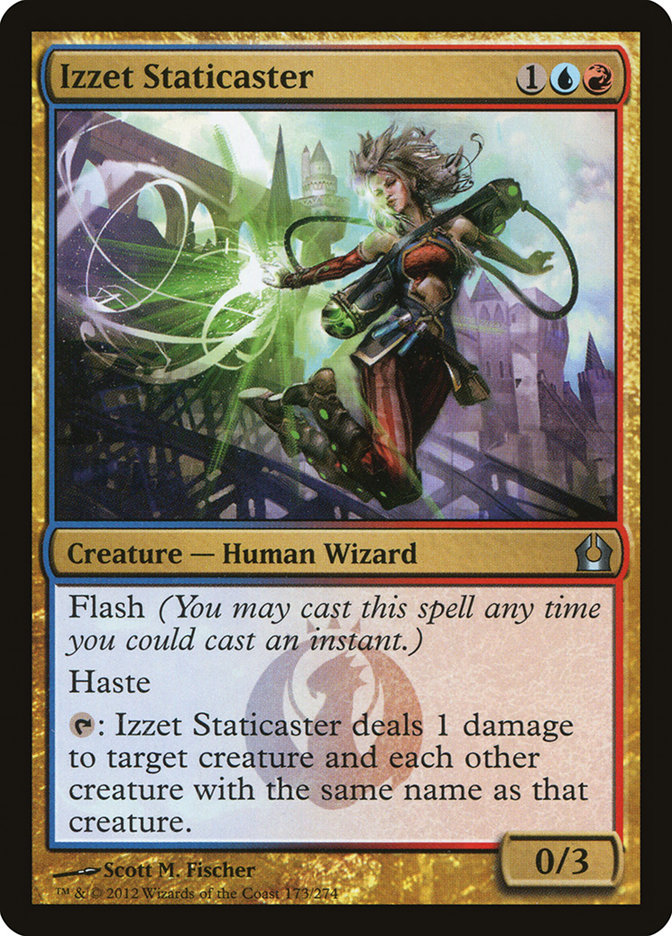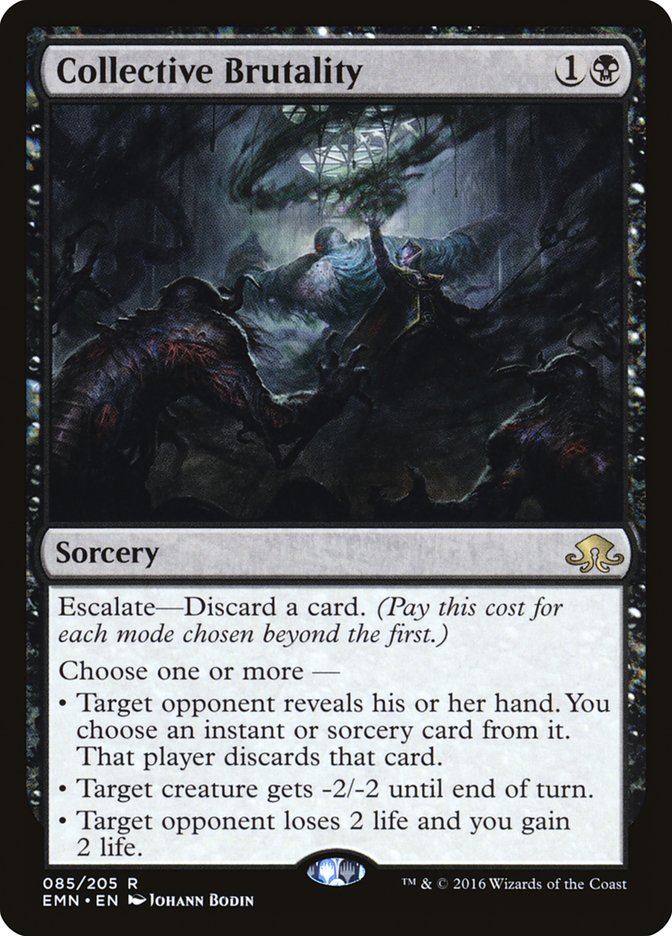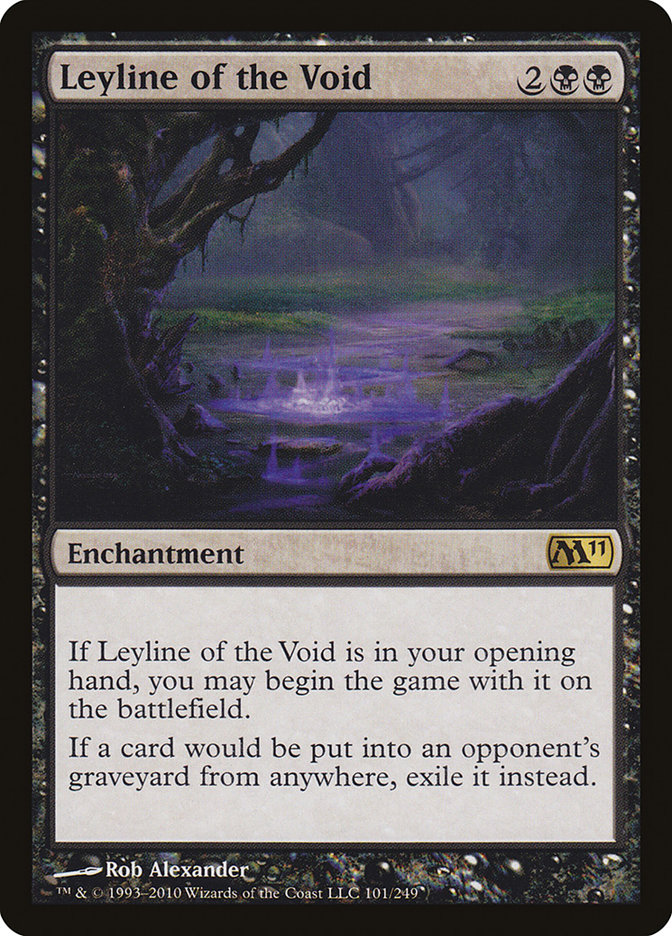With #GPAtlanta this weekend, my testing focus right now is Standard, but I’m pretty resigned to registering an Attune with Aether deck. Esper Gift and Mono-Black Aggro are both promising decks that I’ll try out, but they would have to perform especially well for me to resist the shell that has dominated Standard for the last year.
So I’ll let those who participated in the Pro Tour last year to write about their experiences with the Standard format, and instead look forward to the following weekend, when I’ll be competing in an RPTQ for Pro Tour Rivals of Ixalan.
As many of you know, the format for this round of RPTQs is Modern, so the obvious choice for me is to play Elves. I’m 19-8 in my two events with the deck thus far for an impressive 70% win rate, albeit in a small sample size. I do still think Vizier Elves is the best shell for Devoted Druid, for reasons I’ve written about extensively in the last few months.
Running it back with the deck I’ve been focused on for two-and-a-half months would be all too easy, so naturally I’m reticent to commit. If everything is easy, then it’s not nearly as fun, right?
The Collected Company Problem
I have a long history of playing mana creatures and decks built around them. From Elves to Maverick to Green Devotion variants, a substantial number of my Top 8s have come from Birds of Paradise, Llanowar Elves, Noble Hierarch, etc. They’re innocuous cards that are incredibly powerful, especially when you can leverage them going long, when they would normally reduce in value.
In Modern, Collected Company has become the dominant payoff card for mana creature decks, with Noble Hierarch seeing some sparse play in decks like Infect or Humans. But by and large, if you’re playing lots of mana creatures, you’re playing Collected Company.
On the surface, the two cards work quite well together, since they both increase the value of three mana creatures. The natural curve of mana creature / three-drop / Collected Company becomes rather easy to execute consistently, and it’s a very powerful draw so long as you have the right creatures in your deck for the metagame.
But in Magic you have to prepare for when things don’t go well, and that causes some conflict in Collected Company decks. The stress on mana creatures and three-drops leaves little room for two-drops, and the ones that exist are not particularly good. That hole in the curve makes these decks vulnerable to their mana creature being killed, often skipping their second turn or playing an ineffective card.
I thought Elves having a significantly lower curve would mitigate this issue, but it was clear that the difference between my Top 4 finish in Richmond and a mediocre Top 64 in Cincinnati was the number of times I was able to untap with a mana creature on Turn 2. I didn’t draw nearly as many in my opening hands; the ones I did have were killed or taken by discard spells more often. The low curve and tribal synergies do mean the deck is more explosive than other Company decks in general, which is why I still prefer it, but I’m not completely committed to it.
The Old Flame
Naturally, when you start a new relationship with a deck, you compare it to the one that came before. When I was playing Dredge, the deck felt very powerful and consistent, only losing out when the format saturated with graveyard hate. Eldrazi Tron emerged as a Tier 1 deck in the spring and played a ridiculous amount of hate, some of it in the maindeck, and Grixis Death’s Shadow further stressed the metagame to include graveyard hate.
Before I moved on to Elves for Richmond, I looked to see if the level of graveyard hate had declined any and was disappointed by what I saw. It seemed as though graveyard hate, so necessary in the spring, hadn’t declined much over the summer, even though the metagame demands for it had declined.
That’ll often happen in Magic, where there’s some lag between when a metagame shift happens and when the rest of the metagame responds to that shift. Players are naturally afraid to be caught unprepared, especially against linear decks which are straightforward to prepare for, so they wait longer to gather more data so they can be sure that the risk they are taking is reasonable.
Part of the reason graveyard hate stuck around longer than normal is the rise of U/R Gifts Storm, but against heavy hate, they transition into a Pieces of the Puzzle / Empty the Warrens plan that sidesteps it, so a large part of it sticking around was due to this fear.
Signs of Life
But in recent weeks, I think we’ve finally seen that decline in graveyard hate. On the most recent episode (Number 51) of the GAM Podcast, Gerry Thompson and Brian Gottlieb discussed the idea of cutting graveyard hate from Grixis Death’s Shadow. And in looking over the recent online results, I’m not seeing as much graveyard hate.
Maindeck Relic of Progenitus counts that used to be three- or four-ofs are down to two- and three-ofs. Rest in Peace doesn’t fit that well into Jeskai decks that want to play Snapcaster Mage. And indeed there are various Death’s Shadow lists that have eschewed Nihil Spellbomb entirely. I don’t see a single copy of Ravenous Trap, a card that is impossible to play around and was popping up when Dredge was at the forefront of the metagame.
Moreover, Eldrazi Tron has come down from being consistently among the top two decks in the field at close to ten percent to something around five percent, which puts it in range of a larger group of top decks in the metagame. That is easily the deck’s worst matchup, so to see it decline from a point where you are going to play against it once a tournament and sometimes multiple times to where you are expecting zero to one matches against it is huge.
Even when you look at soft hate cards (cards that are good against Dredge but don’t attack the graveyard), the numbers are good. The main card in this category is Anger of the Gods and I’m seeing a lot less of it right now and a lot more copies of Kozilek’s Return and Izzet Staticaster. Staticaster is also good against Dredge but more manageable, and Kozilek’s Return is nothing but a speedbump unless your opponent can pressure you immediately after it. Fringe cards like Worship are even rarer than before, so sideboarding is more straightforward, letting you keep more of your engine together in the post-sideboard games.
These numbers may not seem that significant, maybe a decline of one hate card per sideboard and a small portion of decks that have no hate at all. But that’s all it takes for a powerful linear deck to re-emerge. Your Game 1 win rate with Dredge is so high that players are pressured to find their hate early in both post-sideboard games. With three to five hate cards, that’s not likely, and it only gets worse when you trim one or two. If my expected win rate with a deck goes up five percentage points due to a favorable metagame, that deck is going to be an excellent choice for the weekend.
Matchup Concerns
But of course, not every recent metagame development has been positive for Dredge. There are two matchups that give me pause.
The first is Storm, which I mentioned earlier as one of the reasons graveyard hate stuck around longer than I expected, but it’s also a matchup that Dredge struggles with. They’re about a turn faster and neither deck has much in the way of disruption. Finding an early Conflagrate so they can’t simply cast a creature on Turn 2 and leverage the mana reduction on Turn 3 is critical simply because it’s the one way you can slow them down.
However, this is also one of the few matchups where I think Dredge improves after sideboarding. Collective Brutality is excellent against Goblin Electromancer and Dredge can sideboard both graveyard hate and Thoughtseize without significantly impacting its clock. The real question is how much Dredge needs to prepare for Empty the Warrens in the post-sideboard games, so Maelstrom Pulse and/or Engineered Explosives will enter the sideboard in small numbers.
Also, we’re now at the point where Storm is facing a lot of hate of its own in the metagame. Thalia, Guardian of Thraben; Eidolon of Rhetoric; and Meddling Mage are all showing up in numbers and there are plenty of decks with counterspells they have to fight through. Storm is a good enough deck that it can fight through the hate, but it’s not as popular as it was a few weeks ago.
Second is Counters Company, a deck which had its strongest showing in a while at the Open in Cincinnati. While not an especially bad matchup for Dredge, it’s a tricky one. Conflagrate is obviously great against them, but you really want to have an instant-speed piece of interaction so they can’t Collected Company into a Devoted Druid on your end step and kill you on their turn. It’s a deck that can beat you without graveyard hate, but you do have plenty of options with which to fight them.
Personally, I’m a big fan of Lightning Axe. It’s another enabler that can kill a mana creature on Turn 1 if needed. It interacts nicely with the combo and is widely applicable in Modern, killing Thought-Knot Seer, Scavenging Ooze, Knight of the Reliquary, Tarmogoyf, Death’s Shadow, and more.
Given the pressures of the current metagame, I’m looking at the following list:
Creatures (21)
Lands (20)
Spells (19)

With maindeck copies of Lightning Axe and Darkblast supplemented by five more creature removal spells in the sideboard, this list has more interaction than Dredge decks I’ve played in the past. It also has five discard spells to bring in against Storm, which, combined with the ability to remove their creatures and a substantial clock, should be enough to give you the edge in the last two games, or at least make the matchup very close.
Am I Too Late?
Of course, the RPTQ isn’t for another two weeks, which is a long time in Magic given, how many matches are played online every single day. We’re in a period where the main focus of the community is on Standard, which should slow down the metagame evolution in Modern, but we’re already starting to see others pick up Dredge now that the hate has subsided.
If you look at MTGGoldfish’s metagame data, Dredge is at its highest share in months. This shouldn’t be surprising, given everything I’ve written above, but it gives me pause about potentially moving in too late and falling to a resurgence in graveyard hate that will undoubtedly come in response.
I played Magic for a long time when there weren’t as many tournaments and metagames moved rather slowly. That isn’t the case these days and the windows of opportunity for decks that depend on favorable metagame conditions open and close quite quickly, often over a single week. And while the focus on Standard this week could mean the window stays open longer, it also deprives me of information with which to make the decision.
So I have to ask myself: am I going to give into the fear or bank my return to the Pro Tour on a deck that could run into a minefield of Relic of Progenituses and Leyline of the Voids?
I wrote earlier about players giving in to the fear too often, and while I’d like to think that I’ve risen above that over my years of playing, the reality is that I’m just as vulnerable to it as anyone. RPTQs are boom/bust tournaments where only a handful of people leave happy and close calls do not feel good. This is the exact scenario where picking a bad deck for the room feels bad, because you don’t give yourself a chance to succeed, but if I choose wisely, it could run through the room like a hot knife through butter.
I’ll be tabling this decision while I prepare for this weekend, but I’ll be checking Modern results regularly and hopefully I can get back to some Turn 1 “Faithless Looting, Opponent Groans” sequences. Dredge gets a lot of hate for being so different from a normal Magic deck, but that’s what makes it so beautiful to me. Magic is great particularly because of how strategically diverse it is and Dredge may be the finest example of that diversity. The Modern variant plays lots of long, interesting games with decisions on both sides, even if it plays just as many games where you put ten power on the battlefield by Turn 3 and Conflagrate their creatures away.
Both types of games are fun! At least, they are for me.


